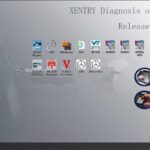Tuning your car’s engine control unit (ECU) can enhance performance and fuel efficiency. While professional tuning can be expensive, Free Obd2 Tuning Software like TunerPro offers a DIY approach. This guide explores TunerPro, its functionalities, and how to use it for vehicle tuning.
What is TunerPro and How Does it Work?
TunerPro is a free OBD2 tuning software developed by Mark Mansur, a Microsoft engineer. It allows users to modify the calibration data within a vehicle’s ECU and transmission control unit (TCU). Unlike professional tuning tools, TunerPro doesn’t directly read or write to the ECU. Instead, it edits the binary file extracted from the ECU, which is then flashed back onto the unit. This process requires a separate OBD2 interface and flashing software.
Key Features of TunerPro
This free obd2 tuning software boasts several advantages:
- Cost-Free: No licensing fees or subscriptions are required.
- Multiple Instances: Open and work with multiple files simultaneously.
- File Size Compatibility: Handles files of any size without limitations.
- Copy/Paste Functionality: Easily copy and paste values between files and external applications.
- Vehicle Compatibility: Works with various vehicle types including cars, motorcycles, trucks, and boats.
- Data Visualization: Provides table views and 3D graphs for clear data representation.
Utilizing TunerPro for ECU Tuning: A Step-by-Step Guide
To use TunerPro effectively, you’ll need:
-
Binary File (BIN): The original file extracted from your vehicle’s ECU. This is often referred to as a flash, micro, or eprom file. You’ll need specialized hardware and software to read this file from your vehicle’s OBD2 port.
-
XDF Definition File: This crucial file, also known as a template or calibration file, acts as a map for the binary file. It tells TunerPro how to interpret the data within the BIN file, identifying parameters like fuel maps, ignition timing, and boost pressure. OldSkullTuning.com offers a range of XDF files for various vehicles.
-
TunerPro Software: Download the latest version of TunerPro from the official website.
Once you have these components:
- Open TunerPro: Launch the application and open your BIN file.
- Load XDF: Import the corresponding XDF file for your vehicle. This will map the data within the BIN file, making it readable and editable.
- Modify Parameters: Adjust the desired parameters within the defined maps. Exercise caution as incorrect modifications can negatively impact engine performance and potentially cause damage.
- Save Modified File: Save the adjusted BIN file.
- Flash to ECU: Using separate flashing software and an OBD2 interface, upload the modified BIN file back to your vehicle’s ECU.
Finding the Right XDF File
Locating the correct XDF file for your specific vehicle and ECU is essential. OldSkullTuning offers a database of supported vehicles and their corresponding XDF files. Their website provides a comprehensive list and contact information for inquiries.
Understanding the Risks and Seeking Support
Modifying ECU parameters carries inherent risks. Incorrect tuning can lead to poor performance, engine damage, and even void warranties. OldSkullTuning provides support for users who purchase their XDF files, offering guidance on Stage 1 remapping, map interpretation, and TunerPro usage.
Conclusion
TunerPro presents a powerful free obd2 tuning software solution for DIY car enthusiasts. However, proceed with caution, research thoroughly, and understand the risks involved. Leveraging resources like OldSkullTuning and their support services can greatly enhance your tuning experience and minimize potential issues. Remember to always prioritize safety and responsible tuning practices.

